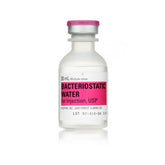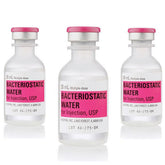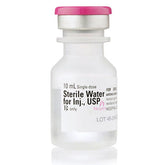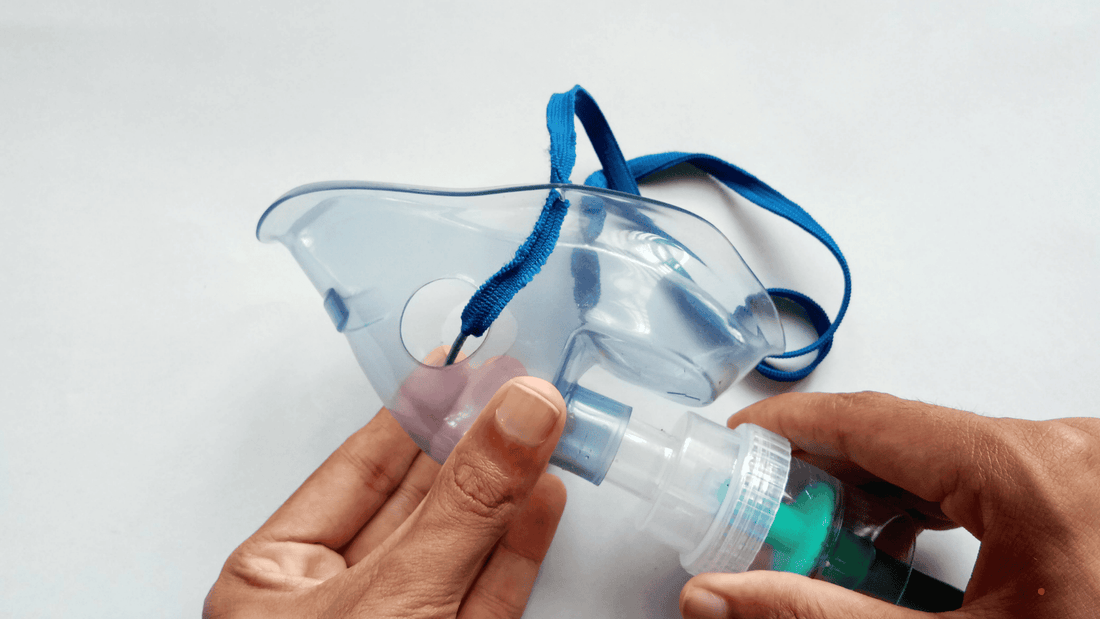A nebulizer is a medical device that helps deliver medication directly into the lungs by converting liquid medicine into a fine mist that can be inhaled. This makes it an essential tool in managing various respiratory conditions, especially when swift and effective medication delivery is needed.
Nebulizers are used by people with conditions such as asthma, chronic obstructive pulmonary disease (COPD), bronchitis, and other respiratory illnesses. This article aims to provide an in-depth understanding of nebulizers, covering their safety, use, maintenance, and other aspects to help both medical professionals and laypeople grasp their importance in respiratory care.
How Does a Nebulizer Work?
A nebulizer works by using compressed air or ultrasonic technology to convert liquid medication into an aerosol mist. The patient then breathes in this mist through a mask or a mouthpiece.
This ensures that the medication is delivered directly to the lungs, where it can act quickly to open the airways, reduce inflammation, and improve breathing. The process is effective because it bypasses the digestive system, providing faster relief, especially in acute situations like asthma attacks.
What Conditions Require a Nebulizer?
Nebulizers are commonly used for respiratory conditions where efficient drug delivery to the lungs is crucial. These include asthma, COPD, cystic fibrosis, and severe bronchitis.
Nebulizers are particularly beneficial for chronic conditions requiring long-term treatment as well as acute respiratory exacerbations. They are also ideal for young children and elderly patients who may struggle with using inhalers properly.
Safety and Side Effects of Nebulizers
Nebulizers are generally safe for most patients, but like any medical device, they have potential side effects. The medications used can sometimes lead to increased heart rate, jitteriness, or throat irritation. It is important to follow medical guidance on dosages and frequency to minimize these risks.
Proper use and cleaning of the nebulizer can also prevent lung infections or complications from contaminated equipment.
Nebulizer vs. Inhaler: What’s the Difference?
While both nebulizers and inhalers are used to deliver medication to the lungs, they function differently. Inhalers are handheld devices that require precise timing and inhalation to be effective, whereas nebulizers create a continuous mist, making them easier for those who have difficulty coordinating their breathing.
Nebulizers are often used for more severe cases or when higher doses of medication are required. Inhalers are generally more portable, while nebulizers offer a more straightforward method for those who need sustained medication delivery.
How Long Does a Nebulizer Treatment Take?
A typical nebulizer treatment takes between 10 to 15 minutes, depending on the medication and the patient's lung capacity. The duration can vary based on the type of nebulizer and the medication used.
Most patients use a nebulizer treatment anywhere from once to multiple times a day, as prescribed by their healthcare provider. It is important to complete the full session to ensure all the medication has been delivered effectively.
Cleaning and Maintenance of a Nebulizer
Proper cleaning and maintenance of a nebulizer are essential to ensure effective treatment and prevent infections. The mouthpiece or mask should be cleaned after each use with warm, soapy water, and the device should be disinfected regularly.
Nebulizer tubing should be replaced periodically, as it cannot be cleaned effectively. Neglecting maintenance can lead to bacteria or mold growth, which can cause respiratory infections.
Types of Medications Used in Nebulizers
Nebulizers can be used to deliver a variety of medications, including bronchodilators (e.g., albuterol), corticosteroids, and antibiotics. Bronchodilators help to open the airways, making it easier to breathe, while corticosteroids reduce inflammation in the airways.
Depending on the condition, saline solutions may also be used to help loosen mucus. The choice of medication depends on the specific needs of the patient and should be prescribed by a healthcare professional.
Can Children Use a Nebulizer?
Yes, nebulizers are safe and commonly used for children, particularly because they are easier for young children to use compared to inhalers. Special child-friendly masks are available to make the treatment more comfortable.
Parents can help by creating a calm environment during the treatment, perhaps allowing the child to watch a favorite show or read a book to make the experience less intimidating.
Traveling with a Nebulizer
Traveling with a nebulizer is possible, and there are portable models designed specifically for travel. It is important to ensure that the nebulizer is battery-operated or comes with an adapter suitable for various power outlets, especially when traveling internationally.
Many airlines allow nebulizers on board, but it is always wise to check airline policies beforehand.
Breathing Techniques During Nebulizer Use
Proper breathing techniques can enhance the effectiveness of nebulizer treatment. Patients should breathe in slowly and deeply through the mouth, holding their breath for a few seconds before exhaling.
This helps the medication reach deeper into the lungs. Remaining relaxed and focused during treatment can also aid in more effective drug delivery.
Alternatives to Using a Nebulizer
Inhalers are the most common alternative to nebulizers. Dry powder inhalers and metered-dose inhalers can be effective for many people with respiratory issues.
Spacers can also be used with inhalers to make them easier to use, particularly for children. Oral medications or injections may also be used for some respiratory conditions, depending on the severity and nature of the disease.
Signs That Someone Needs a Nebulizer Treatment
Signs that a nebulizer treatment is needed include wheezing, difficulty breathing, chest tightness, and persistent coughing. During an asthma or COPD flare-up, using a nebulizer can help provide immediate relief by opening up the airways.
It is always important to follow a healthcare provider's recommendation to determine when a nebulizer is necessary.
How to Know If the Nebulizer Is Working Properly
A properly functioning nebulizer will produce a visible mist that the patient can inhale. If the mist is weak or absent, the nebulizer may require cleaning or have a blockage.
Ensuring the medication chamber is correctly filled and the tubing is connected properly is essential for effective treatment. If issues persist, consult the manufacturer's instructions or contact a healthcare professional.
Using a Nebulizer for the First Time: Do You Need a Doctor?
Using a nebulizer for the first time can be a bit intimidating, but with proper guidance, it becomes manageable. It is highly recommended to have a healthcare professional demonstrate its use initially.
They can show the correct way to assemble, use, and clean the device. After this, most patients feel comfortable using it on their own.
Is a Nebulizer Suitable for Treating Allergies?
Nebulizers can be used to treat allergy-induced respiratory symptoms, particularly if the symptoms include bronchospasm or airway inflammation. In such cases, medications like bronchodilators and corticosteroids can provide relief.
However, for mild allergy symptoms, other treatments like antihistamines or nasal sprays might be more appropriate.
What Does It Feel Like to Use a Nebulizer?
Using a nebulizer is generally a comfortable experience. Patients may feel a cool mist entering their lungs as they breathe in. Some people might feel a slight tickling in their throat or need to cough.
The key is to remain relaxed during the treatment to allow for the medication to be inhaled deeply into the lungs.
Conclusion
Nebulizers are a vital tool in managing respiratory conditions, providing effective and direct medication delivery to the lungs. Whether for chronic conditions like asthma and COPD or acute respiratory issues, nebulizers make treatment accessible and effective.
It is essential to consult a healthcare provider for personalized advice, especially when using a nebulizer for the first time. By understanding how to use and maintain a nebulizer, patients can take control of their respiratory health and achieve better outcomes.











